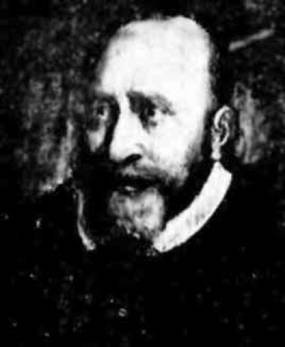The equals of Robert Recorde
by Burkard Polster and Marty Ross
The Age, 8 November 2010

You may not have heard of Robert Recorde. We previously knew little of the 16th Century mathematician, but twice had cause to mention him this year. He first arose in our discussion of surds, Recorde providing the earliest known English usage of the word. We also noted that this year is the 500th anniversary of Recorde’s birth. This rare milestone gives us a platform to highlight Robert Recorde’s notable achievements.
It must first be mentioned that our (and others’) celebrations may be premature. Robert Recorde is known to have been born in the Welsh town of Tenby, and his birth year is nearly always given as 1510. However, it is hardly surprising that there is slim evidence for this date. Indeed, there is reason to believe that Recorde was actually born in 1512 or 1513. No matter: we’ll simply honour Robert Recorde again in a couple of years.
Robert Recorde was the first great English mathematics writer. Recorde’s The Ground of Artes, published in 1543, was England’s first popular arithmetic manual. It was followed by Recorde’s 1551 textbook on geometry (in which he first used the word “surde”), his 1556 textbook on astronomy, and finally his 1557 textbook on algebra, The Whetstone of Witte. Recorde then died in prison in 1588, the consequence of his initiating a legitimate but ill-advised legal action against a powerful enemy.
Though educated at Oxford and Cambridge, it was no accident that Recorde chose to write in English, rather than the scholarly Latin. Recorde’s focus was always upon clarity and practicality. He emphasised applications, though with respect for the deeper, underlying ideas. Recorde’s texts are now difficult to read, but in his time they were considered models of thoughtful, careful exposition, and they remained in print long after his death. The Ground of Artes went through a large number of editions, up until 1699.
As an early English writer of mathematics, Recorde had many opportunities to introduce new expressions for mathematical quantities. Many, such as the remarkable “zenzizenzizenzike” (indicating the eighth power of a number), were clumsy and, unsurprisingly, have not survived.
When based upon simple English, Recorde’s invented terminology was more natural. However, he later ceased this practice, deciding that contrived English expressions would be “obscuryng the olde Arte with newe names”. He was perhaps correct, though we regret that his “like flattes” has not survived to describe similar plane figures. But, at least Recorde’s “straight line” is still going strong.
Undoubtedly, Robert Recorde is most famous for having introduced “=”, our modern equals sign. It appears in The Whetstone of Witte, Recorde’s first ever equation being 14x + 15 = 71.

It is no coincidence that Recorde’s equals sign was very long. The symbol was already in common use in geometry, to indicate lines being parallel. Recorde simply adopted the symbol of parallel lines as a metaphor,
because noe .2. thynges, can be moare equalle.
Recorde’s introduction of the equals sign was much more than the gift of an elegant symbol. Prior to Recorde, very few mathematicians had employed any such symbol, instead simply stating an equality in words. Moreover, Recorde beautifully emphasised the fundamental role of equality in algebra: if we take equal expressions and then perform the same manipulations on the two expressions, the resulting numbers must still be equal. In Recorde’s words,
if you abate even portions from thynges that bee equalle,
the partes that remain shall be equall also.
Equality is the single most important concept in mathematics. Much too often, we witness writers shy away from using “equals”, employing instead a cowardly “equivalent”. By this and other means, there is a continual devaluing of the central role of equality.
Recorde’s equals symbol is powerful and beautiful, and deserving of much greater acknowledgment and respect. We proudly and humbly honour Robert Recorde, on the occasion of his 500th (or 498th) birthday.
Puzzle to Ponder: Feel free to suggest solutions in the comments section. Please also email us if you wish to be added to our email list.
Consider the following equation, which is discussed in a popular Year 12 text:

Burkard Polster teaches mathematics at Monash and is the university's resident mathemagician, mathematical juggler, origami expert, bubble-master, shoelace charmer, and Count von Count impersonator.
Marty Ross is a mathematical nomad. His hobby is smashing calculators with a hammer.
Copyright 2004-∞ ![]() All rights reserved.
All rights reserved.